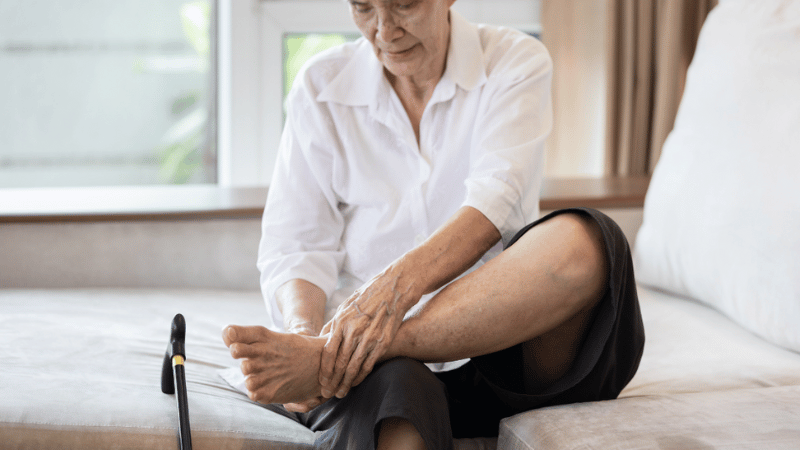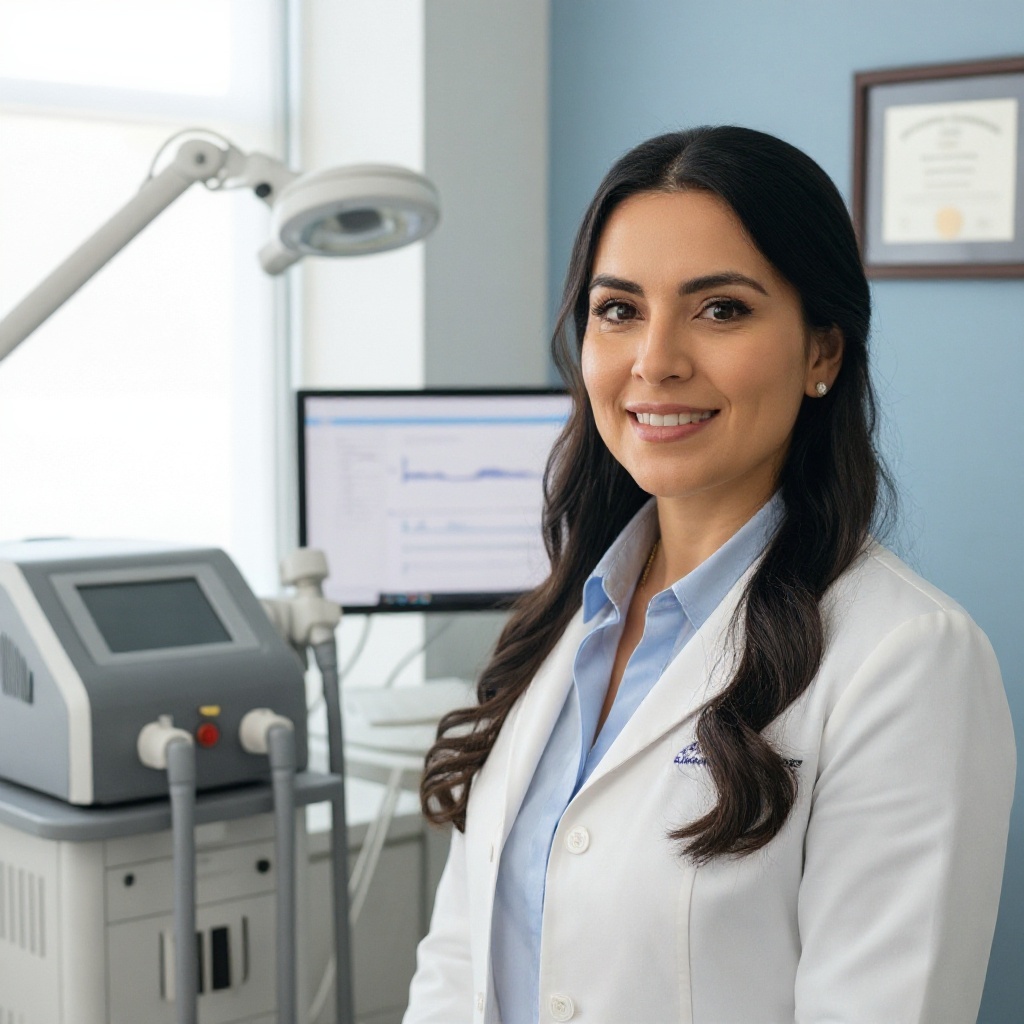Losing Hair on Your Legs? Here’s What It Could Mean

Key points
- Pain, cramping, or heaviness in the leg muscles (claudication) during activity, which subsides with rest.
- Shiny skin on the legs.
- Slow-growing toenails.
- Sores or wounds on the toes, feet, or legs that heal slowly or not at all.
- Numbness or weakness in the legs.
- A lower temperature in one leg compared to the other.
While we often associate hair loss with our scalp, it can happen on nearly any part of the body, including the legs. For many, gradual thinning of leg hair is a normal part of aging. But if you notice sudden, patchy, or widespread hair loss on your legs, it could be your body's way of signaling an underlying health issue.
From simple friction to a serious vascular condition, understanding the potential causes is the first step toward addressing the problem. This article synthesizes expert information to provide a comprehensive guide to why you might be losing hair on your legs, when to be concerned, and what you can do about it.
The Spectrum of Causes: Why Is Your Leg Hair Disappearing?
The reasons for leg hair loss, medically termed alopecia, are diverse. They can be broadly categorized into circulatory problems, systemic health conditions, nutritional factors, and external influences.
Vascular and Circulatory Problems: A Major Red Flag
One of the most critical causes of leg hair loss is poor circulation, often stemming from Peripheral Artery Disease (PAD).
Peripheral Artery Disease (PAD)
PAD is a condition where plaque (a combination of fat, cholesterol, and other substances) builds up in the arteries, a process called atherosclerosis. This buildup narrows the arteries and restricts blood flow to your limbs, especially the legs.
 Image Source: USA Vascular Centers
Image Source: USA Vascular Centers
When your hair follicles don't receive enough oxygen-rich blood and nutrients, they can't sustain hair growth. This leads to the hair thinning and eventually falling out. According to USA Vascular Centers, this is one of the most noticeable early symptoms of PAD.
Other PAD symptoms to watch for:
- Pain, cramping, or heaviness in the leg muscles (claudication) during activity, which subsides with rest.
- Shiny skin on the legs.
- Slow-growing toenails.
- Sores or wounds on the toes, feet, or legs that heal slowly or not at all.
- Numbness or weakness in the legs.
- A lower temperature in one leg compared to the other.
Systemic Health Conditions
Your overall health is directly linked to the health of your hair follicles. Several medical conditions can manifest as leg hair loss.
- Diabetes: Uncontrolled high blood sugar can damage blood vessels, leading to poor circulation and increasing the risk of developing PAD. This impaired blood flow is a direct cause of hair loss on the legs.
- Thyroid Disorders: As detailed by Medical News Today, both an underactive thyroid (hypothyroidism) and an overactive thyroid (hyperthyroidism) can disrupt the natural hair growth cycle, causing hair to shed prematurely from all over the body, including the legs.
- Autoimmune Conditions (Alopecia Areata): In alopecia areata, the body's immune system mistakenly attacks its own hair follicles. While it most commonly causes round, bald patches on the scalp, it can affect any hair-bearing area. Widespread body hair loss is known as alopecia universalis.
- Hormonal Changes: Significant hormonal shifts, such as those occurring during pregnancy, menopause, or from pituitary gland disorders, can trigger temporary hair loss on the legs. Cleveland Clinic notes that dropping estrogen during perimenopause can lead to sparser hair on the arms and legs.
Nutritional Deficiencies
For hair follicles to thrive, they need a steady supply of essential vitamins and minerals. A deficiency can halt hair production.
According to a report by Healthline, key nutritional deficiencies linked to hair loss include:
- Iron: Lack of iron can lead to anemia, reducing the oxygen-carrying capacity of your blood, which starves hair follicles.
- Zinc: Zinc plays a crucial role in hair tissue growth and repair.
- Vitamin D: Low levels of this vitamin have been linked to various types of hair loss.
External and Lifestyle Factors
Sometimes, the cause of leg hair loss isn't internal but related to your daily habits and environment.
 Image Source: Vein Envy
Image Source: Vein Envy
- Frictional Alopecia (Anterolateral Leg Alopecia): This is a very common, benign cause, especially in middle-aged and older men. It's characterized by symmetrical hair loss on the front (anterior) and sides (lateral) of the lower legs. The primary suspected cause is chronic friction from wearing tight pants, socks, or boots.
- Medications: A side effect of certain drugs can be hair loss. Common culprits include some blood thinners, antidepressants, steroids, and medications for cholesterol and high blood pressure.
- Stress and Physical Trauma: A major surgery, illness, or significant emotional stress can cause a temporary type of hair loss called telogen effluvium, where more hairs than usual enter the shedding phase.
- Skin Conditions: Inflammatory skin issues like eczema and psoriasis, or infections like folliculitis, can damage hair follicles and lead to localized hair loss.
When to Worry: Benign vs. Pathological Hair Loss
How can you tell if your leg hair loss is a normal part of aging or a sign of something more serious? The pattern and accompanying symptoms are key.
| Feature | Benign Leg Hair Loss (e.g., Anterolateral Leg Alopecia) | Pathological (Concerning) Leg Hair Loss |
|---|---|---|
| Pattern | Symmetrical, sharply defined patches on the front and sides of lower legs. | May be patchy, widespread, or asymmetrical. |
| Onset | Gradual, often unnoticed over years. | Can be sudden or rapid. |
| Associated Symptoms | Typically none. The skin appears healthy. | Accompanied by leg pain, numbness, skin discoloration, shiny skin, slow-healing sores, or fatigue. |
| Progression | Usually stable and doesn't worsen significantly. | May progress if the underlying condition is not treated. |
You should consult a healthcare professional if your leg hair loss is sudden, widespread, or accompanied by any of the warning signs associated with PAD or other systemic conditions.
Diagnosis and Treatment: Getting to the Root of the Problem
Because the causes are so varied, a proper diagnosis is essential before starting any treatment.
The Diagnostic Process
A doctor will likely:
- Take a Medical History: Discuss your symptoms, the onset of hair loss, lifestyle, diet, and any medications you're taking.
- Perform a Physical Exam: Examine your legs for the pattern of hair loss and check for signs of poor circulation, such as a weak pulse in your feet, skin changes, or temperature differences.
- Order Blood Tests: Check for nutritional deficiencies, thyroid function, and hormone levels.
- Conduct Vascular Tests: If PAD is suspected, an Ankle-Brachial Index (ABI) test is a simple, non-invasive way to compare the blood pressure in your ankles to the pressure in your arms. A low ABI value can indicate narrowed arteries.
Treatment Options and Prognosis
Treatment is aimed at the underlying cause, and the chance of hair regrowth depends entirely on it.
- For Peripheral Artery Disease (PAD): Treatment focuses on improving circulation through lifestyle changes (quitting smoking, regular exercise), medication, or minimally invasive procedures like angioplasty or stent placement to open blocked arteries. While treating PAD can halt further hair loss, regrowth is not always guaranteed.
- For Nutritional Deficiencies: Hair loss is often reversible with proper supplementation and dietary adjustments.
- For Thyroid or Hormonal Issues: Correcting the imbalance with medication typically leads to hair regrowth over time.
- For Frictional Alopecia: The condition is benign, and treatment is not necessary. Avoiding tight clothing may help prevent it from worsening.
- For Autoimmune Conditions: Treatments like corticosteroids can help manage inflammation and may stimulate regrowth, but the condition can be unpredictable.
Losing hair on your legs can be unsettling, but it's often a solvable issue or a manageable part of life. The most important step is to pay attention to the signs. By recognizing when it's more than just a cosmetic change, you can seek the right medical advice and protect your overall health.
Disclaimer: This article is for informational purposes only and does not constitute medical advice. Always consult with a qualified healthcare professional for any health concerns or before making any decisions related to your health or treatment.
References
- Cherney, K. (2025). Hair Loss on Legs: Causes and How to Treat. Healthline. https://www.healthline.com/health/hair-loss-on-legs
- Dresden, D. (2023). Hair loss on legs: Causes, treatments, and more. Medical News Today. https://www.medicalnewstoday.com/articles/327039
- USA Vascular Centers. (2025). Hair Loss on Legs: Warning Sign of Peripheral Artery Disease (PAD). https://www.usavascularcenters.com/blog/hair-loss-legs-might-vascular-problem/
- American Endovascular. (2024). Why Am I Losing Hair on My Lower Legs?. https://americanendovascular.com/blog/why-am-i-losing-hair-on-my-lower-legs/
- Siah, T. W., & Harries, M. J. (2014). Anterolateral Leg Alopecia: Common but Commonly Ignored. International journal of trichology, 6(2), 74–75. https://pmc.ncbi.nlm.nih.gov/articles/PMC4154156/
- Cleveland Clinic. (n.d.). 29 Perimenopause Symptoms You May Not Know About. https://health.clevelandclinic.org/weird-symptoms-of-low-estrogen

About the author
Elena Vance, MD, is a double board-certified dermatologist and pediatric dermatologist. She is an assistant professor of dermatology at a leading medical university in California and is renowned for her research in autoimmune skin disorders.